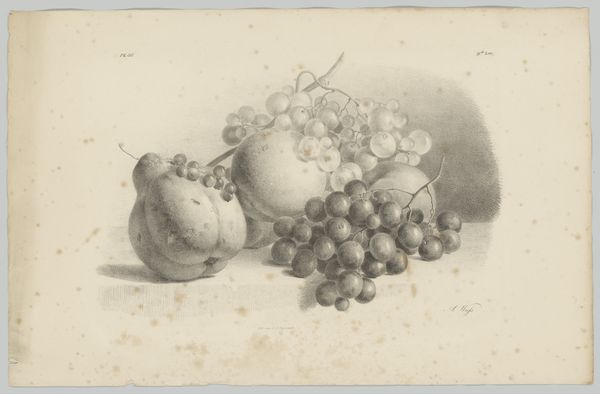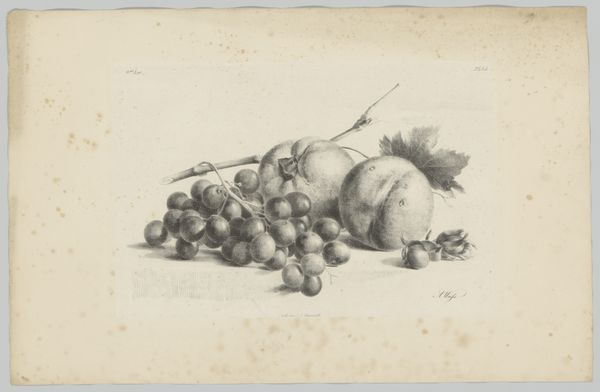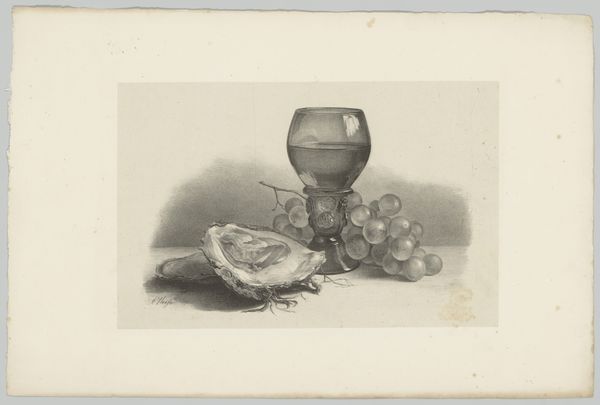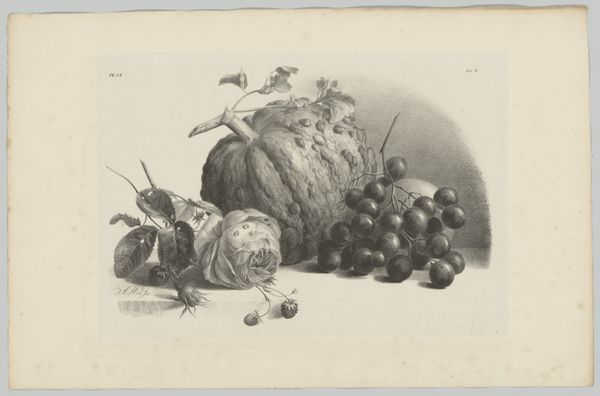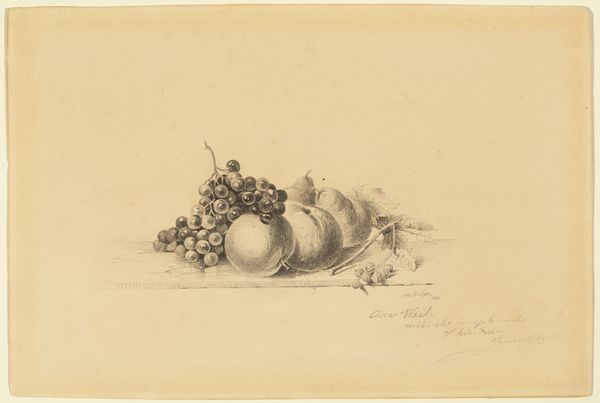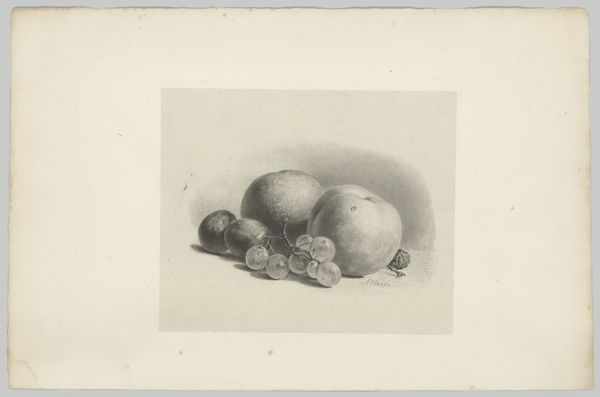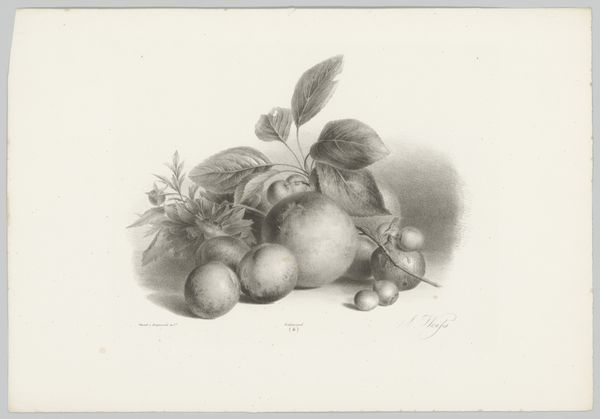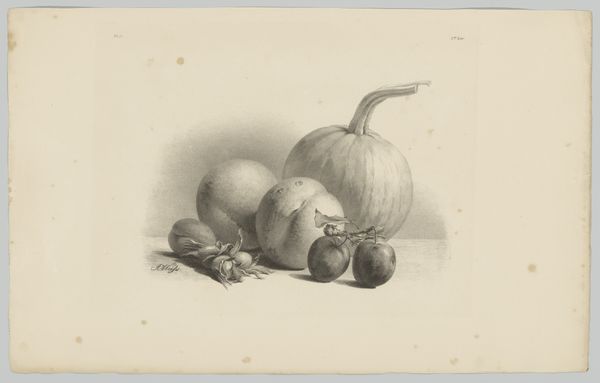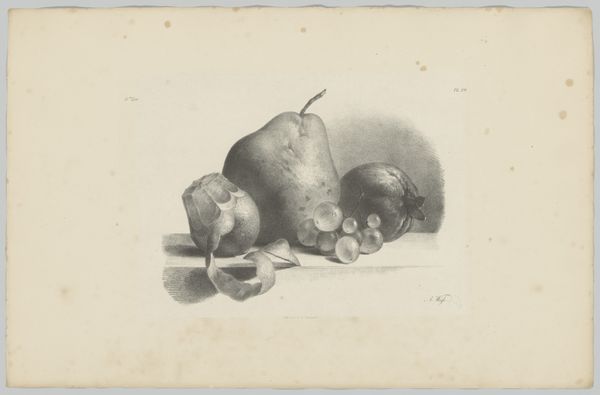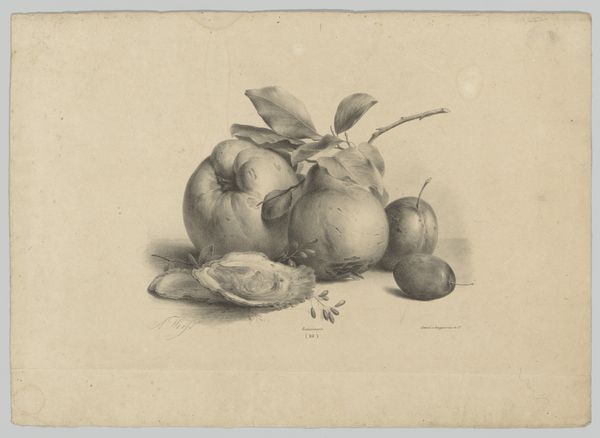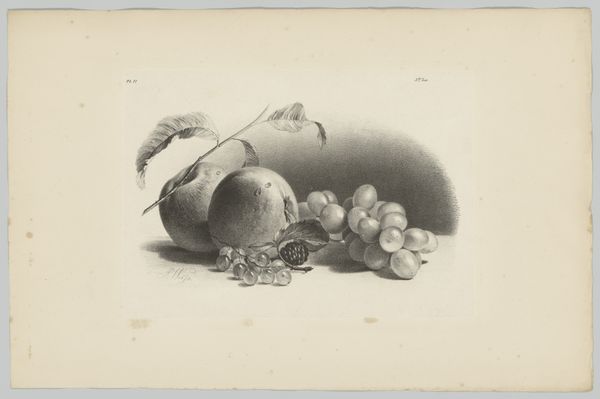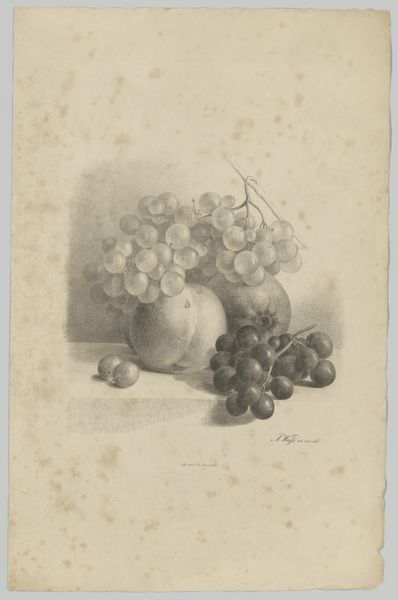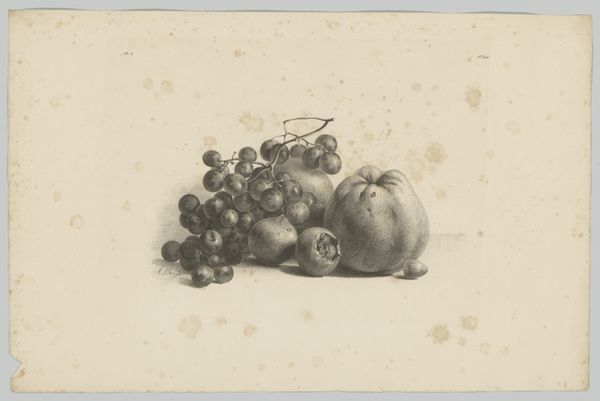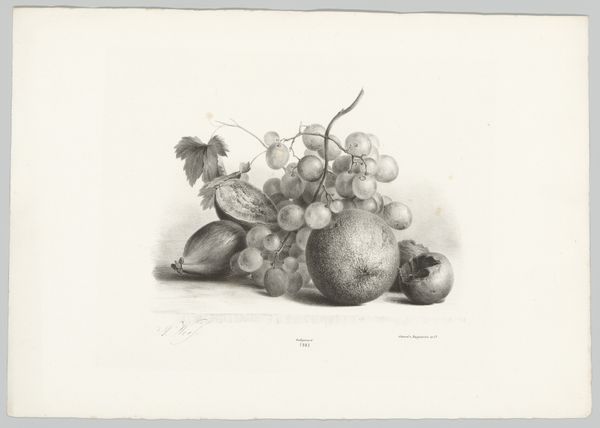
drawing, pencil
#
drawing
#
16_19th-century
#
pencil
#
realism
Dimensions: height 296 mm, width 430 mm
Copyright: Rijks Museum: Open Domain
Anton Weiss made this still life with plums, lemon, grapes, and hazelnuts in the early 19th century using lithography. This printmaking technique involves drawing an image on a flat stone or metal plate with a greasy substance, then applying ink, which adheres only to the greasy areas, before printing. The lithographic process is key to understanding this image. The smooth gradations of tone, achieved by the artist's expert handling of the greasy crayon, give the fruits a palpable weight and volume. Look closely, and you'll see how Weiss used the lithographic crayon to mimic the textures of the glass and fruit. This was a relatively new medium in the 19th century, closely tied to the rise of commercial printing and mass communication. It allowed for the relatively quick and inexpensive reproduction of images, making art more accessible to a wider audience. Weiss’s print is also a reminder that “fine art” techniques are always entangled with industrial production. By focusing on the materials and processes involved, we can appreciate the skill and artistry that went into this image.
Comments
No comments
Be the first to comment and join the conversation on the ultimate creative platform.
